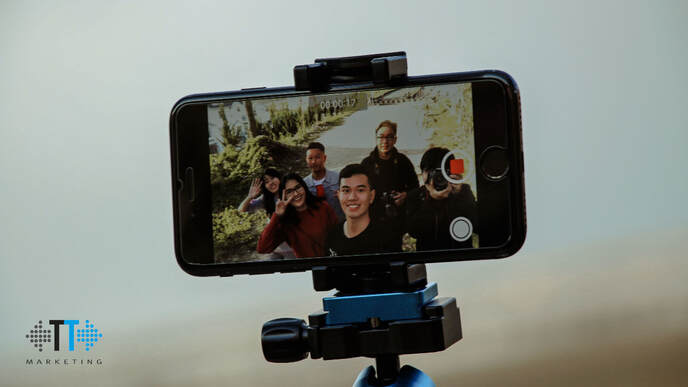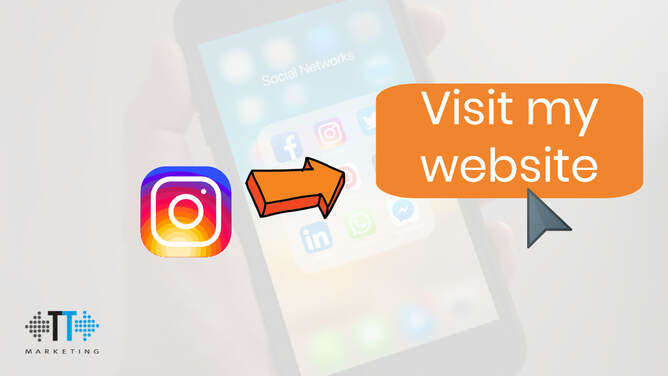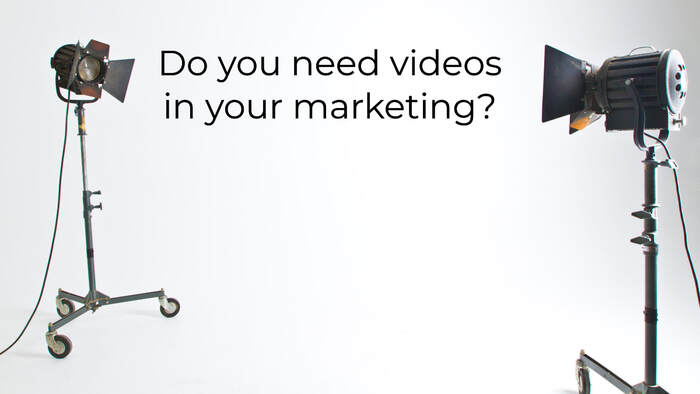|
The number three is a magical number which if used properly in your marketing, can help get better results. I was trailing through my archived emails the other day when I came across an email talking about how remembering numbers is easiest when they are grouped into sets of three, and it got me thinking. How can this apply to marketing and sales?
Using the concept of grouping things into 3 means that you can do the following:
The way that the power of three works is simple (I could say I will explain it in 3 simple steps but on this occasion, I won’t). On its own, a single number, price or product seems ‘lonely’. It’s not comprehensive and there’s nothing to compare. The human mind can absorb a lot more information than that so lets at least double it… Two is good, but it could be better. If I ask you to remember a set of numbers, let’s say 702393, you could remember them individually as six separate numbers. You could remember them in groups of two, such as 70, 23, 93 or in groups of three such as 702, 393. You are more likely to remember them - and longer groups of numbers, in groups of three. In his book, How to Write Short, author Roy Peter Clark talks about how using the rule of 3 can be more entertaining and satisfying as well as being more effective. Before we apply this to marketing, let’s consider some real-world examples of how three is being used: Boris Johnson, the UK Prime Minister, was involved in using a simple 3 worded slogan during the EU referendum campaign that was simple and easy to understand: Take Back Control. He then became Prime Minister and won a general election with the three worded slogan ‘Get Brexit Done’ which almost seemed like his answer to everything… but it worked. In 2020 during the COVID-19 outbreak, he also made the message clear ‘stay home, protect the NHS, save lives’. Ok, so the first and last part are only 2 words, but the slogan is split into 3 sections that are easy to understand, memorable and made sense. Staying at home helped protect the NHS and helps to save lives. The power of 3 can be covering 3 words in a slogan or three individual concepts. Martin Luther King Jr., the civil rights activist, often used the power of 3 with lines such as “insult, injustice and exploitation” in one of his speeches* followed by “justice, goodwill, and brotherhood.”. Listing 5, 6 or even 10 things would have been harder to remember and would have diluted the message. Listing three things also makes the presenter seem more knowledgeable. Julius Caesar said “I came, I saw, I conquered”, Winston Churchill once said “Blood, sweat and tears” while the American Declaration of Independence says “Life, Liberty and the pursuit of happiness”. The power of three is not new, but it’s often forgotten when trying to make marketing more effective. Using it in your marketing In my book, Psychology in Marketing and Sales, I talk about Decoy Pricing which involves offering a third pricing option. This third option increases sales conversions and also results in customers opting for higher-priced products or services. This works for various reasons, one of which is that it takes the mind away from comparing lower-priced products, or not buying at all. In your marketing communication you can also use the power of 3 as follows:
Here are some examples to consider: An accountant might highlight they offer ways to save on tax, avoid fines and grow your business as the main benefits. A web designer might increase the value of a service by offering a 3 in 1 package: web design, blogging and social media for one single price. A software company might communicate that their product can be set up in 3, easy to follow steps. A fashion designer might use a slogan such as ‘look great, feel amazing, be different’ Whether you use 3 or another number in your marketing, it’s important to keep messages simple and easy to understand - while making your product attractive. If you would like help defining your marketing messaging and communicating to your customers then get in touch today. *His speech “Non-Violence and Racial Justice”
0 Comments
Updated 3 Nov 2021
What should you write about in a blog post?
Over the years, I’ve heard many people raise two issues when it comes to writing blog posts. Firstly, they don’t have the the time to write regular blog posts and secondly, they don’t know what to write about. Although in reality writing a blog post every month should only take a couple of hours every month, I’m not going to address the first issue in this article.
In answer to the quetions "what should I write about in a blog post", coming up with relevant and useful content can actually be easier than you think and once you get into your creative flow you’ll discover it’s actually a lot easier than you initially thought. Blog content ideas
I've been writing blog posts for over 10 years and from experience, I've never seen anyone sit down with a blank piece of paper and immediately know what they will write about and what the content storry will be.
The best approach to writing blog posts is to brainstorm - or write down a list of possible topics you would like to cover. Pick one of those topics and have a think about how you will structure your article. Before that, there's usually some initial resistance in our mindset that stops us from getting started.
The initial resistance
The first reaction by the human mind to the idea of writing a blog is ‘I can’t do that. I have no idea what to write about and where would I start?’ - but it’s important to make a start and that should be with writing down or brainstorming a list of ideas and topics. A few years ago, I did a training session for a marketing design company. They knew how to create amazing artwork and graphics for their customers but their team wanted to expand their knowledge on topics such as social media and how to create content on various social media and blogging platforms. After suggesting how often they should be posting content, the initial response from the team leader was ‘no, we won’t be posting that often. We don’t have the time to come up with ideas on a regular basis’ but half an hour later, they had a spreadsheet with a list of over twenty different topics they could use. How had this happened? After the initial ‘we can’t do that’ response, I suggested we spend 30 minutes discussing how to come up with ideas. we explored what sort of content could be covered and the conversation went something like this… Me: When you talk to your clients over the phone or face to face, what sort of advice do you give them? Give me a quick example. Team member one: Well, we might suggest that all artwork has their logo on to raise brand awareness and that the colours they use on their website, social media and other marketing materials are consistent and in line with their brand. Team member two: And that the logo should be crisp and easy to identify. We get customers from time to time who have used a blurred logo or their logo is so small you can’t read anything on it. Me: Great, you’ve just given me three or four top tips that you can use to create three or four separate social media posts and possibly a blog post with tips for creating professional branding. At this point, we listed a few more tips before I asked why someone should use them rather than do it themselves or outsource to a generic digital marketing agency. The arguments in favour included their expertise and knowledge of what designs and type of designs work best in marketing. This then became the basis for another blog post on how to choose the right company to help you with your branding. By now you get the idea. If you are a florist, what helpful tips do you give your customers that you can put into a blog post? Maybe this includes frequently asked questions such as ‘which flowers are best for this time of the year’ as well as tips such as how stems should be cut at an angle (I learned this from a customer who is a florist!) or what plant food to use. If you are a bookkeeper, what deadlines should your customers be aware of that you could turn into a blog post? What tips for managing expenses and receipts would you give? Should they use Excel or an online accounting package to track invoices and expenses? If you are a personal fitness trainer or health coach, what eating, sleeping and exercise tips could you give? Could you write about the importance of getting into a regular routine and creating healthy habits? And what are the benefits of using a personal trainer compared to trying to get fit on their own without personal guidance? I’m not a personal fitness trainer, florist or bookkeeper but there are plenty of ideas in this blog post to get you started - and once you get into the flow, you will find that more ideas come up more easily. By the end of my training session, the design agency had agreed to create a shared spreadsheet and team members could freely add suggested topics, tips and upcoming events that would be worth considering. The team leader would then review the spreadsheet and decide what content would be used and how it would be used. This would also include seasonal events throughout the year that were relevant. You might not have a team of marketers to share your thoughts and to give you ideas but you can always use colleagues and even friends and family for ideas. Sometimes having a different perspective can inspire you with new and better ideas for blog posts! By the way, if you are wondering how long a blog post should be then check out another of our blog posts titled How long should a blog post be? I don’t want to give away too much information I’ve heard the argument, especially with business offering services, that they don’t want to give away too much advice that they would otherwise provide as part of their service and make money from. I understand this argument but think of the approach differently. You should provide enough information that demonstrates that you know what you are talking about, that adds value to your potential customer and that leaves them saying ‘These are great tips and you clearly know what you are doing. I can’t do this myself so I need your help’. A business coach, for example, can offer great tips but always highlight how business owners that have a coach achieve greater results because they are more accountable or have someone to ‘bounce ideas off’ (or whatever benefits you as a coach see customers get from using your services rather than doing it themselves). This approach also applies to other types of businesses such as home DIY, gardening or even food manufacturing. You might provide some tips for baking their own cakes or painting their bedroom but many people still want you to do it for them - whether that’s to save them time or make sure the task or product is perfect! Other content ideas So far, we have mostly talked about tips and blog posts around why customers can benefit from your services, but there are other topics to talk about. You could also post about what's going on in your company. This helps to give a personal element to your business that people can associate with - but I don't recommend doing this too often. Whilst it adds a touch of personality and familiarity with the company, it tends to be of less value to a wider audience, especially if almost every post is ‘look at what we are doing’ rather than ‘here’s a post to help YOU!’ Here's a list of possible things that you can write a blog post about:
Let’s give some examples of what blog titles might look like based on the above list:
You might not agree initially, but whatever your business, there are plenty of things to write about. If you're really struggling to come up with ideas then take a look at your competitor's blog posts to see if you can write about similar topics. It’s important to avoid plagiarism but I’m fairly sure that whatever you write about, some elements of it will have been covered somewhere in the world. That doesn’t mean you shouldn’t cover that topic. People want to hear from you, whether that’s your thoughts or what you are doing locally or with your customers, specific to the topic you are writing about. A great source for posts such as top tips can come from questions that you get asked frequently. This helps with creating ideas and also shows that you understand the concerns - and thoughts - of your customers. Admittedly, it’s not always easy to come up with content but it’s easier than you might initially think. You are sure to come up with some great ideas to write about! If you would like to find out more about writing blog posts for your business, grab a copy of my book Blogging for business, or get in touch. We would be happy to write some great blog posts for you! When creating content for social media, it’s important to understand your objectives and the purpose of a post and a key objective for many posts should be to drive people to your website to take action. Unfortunately, there are many challenges such as:
There are many apps that you can use to get better results from what you post. In this blog post, I address the 3 issues mentioned above with some great apps worth considering. Note: While some of these apps offer free features, costs may be involved. Create your own thumbnails While images can grab the attention of followers on Facebook, LinkedIn and Twitter, they can’t have a link attached to them like they can on a website. That’s why posts with thumbnails get more click-throughs than images. Frustratingly, it’s difficult to control what the thumbnail looks like and on Twitter, you might not get a thumbnail at all when you post a link. There are technical ways to manage this with your website but a much better solution is to use an app that controls what the thumbnail looks like. I use Switchy to create a custom thumbnail. It allows users to add the image, title and description for the thumbnail and you can also create a custom URL. Creating your own thumbnails means you can make them stand out better and use the wording you want to entice visitors to click through. Create Multiple Link Bios I have talked about this in a previous post. Social media platforms only allow one clickable URL in your bio but by using a tool such as Shorby or Link In Bio (from Later.com) you can offer your fans a menu of options such as a direct link to your latest blog post, a link to your YouTube channel and much more - including a simple link to your website as well. Using this option gives visitors more choice on platforms such as Twitter as well as increasing the number of clicks from your Instagram posts. Visit Think Twice Marketing on Instagram and click on our bio to see how it works. Alternatively, you can click this link here to see the menu immediately: https://shor.by/9XC1 Third-party re-targeting Sometimes it’s great to show relevant and valuable articles to your fans from other websites but doing so means that they will visit that website and not yours! That’s where tools such as snip.ly and JotURL can help. At Think Twice Marketing we use JotURL for our customers so that a pop-up call to action appears on the third party website, promoting our customer and driving visitors back to their site. Yes - you read that correctly - a call to action on a different site! Imagine that you sell finance support for investments and pensions. You see a great article about how best to invest in your pension. Using a tool such as snip.ly you can have a button with a message on the site they are visit saying ‘Contact us for a FREE pension review’ Here’s an example that we have used for our own business to promote my books: https://jo.my/marketingbooks Driving more visitors to your site and generating leads Using the apps above are a great way to generate more leads and increase sales. If you are looking for help with social media and would like to benefit from the above tools that we already use then why not get in touch with us to see how Think Twice Marketing can help? We also use other tools that provide features such as the ability to add bold and italic in your Facebook posts! Get in touch today to find out more about our social media marketing support. Visual content is more powerful and more effective than text based content and highly visual, engaging videos are more effective than images. The reason for this is that our minds process information better when it's visual and while images might get our attention, videos are better at keeping our attention. Having the right video can also provide more information about the benefits of your brand and what you offer. In this blog post, we will discuss the various types of video that you can use in your marketing. You migh also be interested in our blog post Do you need videos in your marketing? (which goes more in depth into the benefits of using video in your marketing activities. What types of video can I use in my marketing?When creating videos for marketing, there are various types of videos you can use. The type of video you use will depend on your objectives and other factors such as who your target audience is. Here are some of the most popular and most effective type of videos you can use: (Note: You may come across different names for some of these videos. We mention some of the alternative names where possible). Animated videos Also known as dynamic illustrations or explainer videos. Animated videos can contain cartoon-style drawings and animation such as a hand, writing the words across the screen. Animated videos are normally very short (up to 2-3 minutes) and have a very high tempo. Animated videos are great for explaining how a product or process works which is why they are referred to as explainer videos. Here’s an example of an animated video we did explaining how Google Search works. Animated videos are great for keeping the attention of your target audience but on the downside, they don’t have real people in the videos and possibly lack the personality of some of the videos mentioned below. A video featuring you, people in your business or your customers talking about your service allows potential customers to become more familiar with your brand and to build a stronger bond. Corporate/Brand videos Corporate videos are a great way to show how professional and established a business is. These videos tend to be longer than animated videos and for best results, they are typically up to 10 minutes long. The video might include shots of the offices, the manufacturing or design areas, staff and possibly customers. A mixture of music and spoken audio (whether that’s someone in front of the camera or a voice-over) brings the video to life. Corporate videos promote the brand and the company as a whole. They are useful for presentations and for showing to potential clients when bidding for business as they give valuable insights into how the business can help. These types of videos, however, aren’t usually the most exciting videos, and they only connect with customers on a higher, possibly more superficial, level. Testimonial videos Is your product or service any good? How can anyone trust that you deliver a good service or that you will deliver on your promises? The ultimate way to do this pre-sale is to be referred to and recommended by another customer who thinks what you have done for them is amazing. Of course, this isn’t always possible and many potential customers will find you through various marketing campaigns and channels. Having testimonial videos on your website and that you showcase on social media is a great way to convince people to buy from you. A testimonial video involves having one or more customers on camera explaining what you did for them, the benefits and how it made them feel. Videos can be as short as 20 seconds with one customer or as long as 1-2 minutes with several customers giving very brief feedback. The main challenge with testimonial videos is having customers who are willing to go on camera and finding the time and resources to record and edit the video. Having written testimonials is much easier and still powerful, but nothing is better than seeing a customer saying how delighted they are! Live (and recorded) social videos These types of videos can vary in style and length. They can be the ‘on-the-fly’ style videos - you’ve probably seen the guy walking down a busy street using the camera on his phone, telling you what he is up to and sharing his top tip or thought of the day. They can also be a carefully planned out Facebook Live video recorded from your office that lasts anything up to an hour! (personally, I think that anything over 20 minutes is too long but there are circumstances where longer videos are needed). Live videos are great for engaging your audience on social media and allow your fans to build familiarity with you and your brand on a personal level. Done properly, they can even be recorded and used in an Ads campaign to promote a service or special offer. One speaker personal videos This type of video is very similar to Live social videos. The only difference is that they aren’t live. These videos typically involve one person, talking on camera about a topic that interests your audience. This might be a special promotion you are running or it could be providing some great advice. A business coach, for example, might do a quick video to discuss the importance of delegating or how to motivate and lead a team for effective results. Presentation style pictures and sound There are a number of apps available that allow you to upload images and select a background soundtrack. The app then creates a video which involves playing the images in a sequence with the background soundtrack. You can also add overlay wording and special effects such as having an image fade out or zoom in. Using these apps are generally low cost and relatively easy to make compared to hiring a professional. They are also very effective but lack the personal touch that live social or testimonial videos provide. Presentation style videos are great for presenting products such as tasty food dishes for a restaurant. They are also great for providing a summary of a blog post that you have written. At Think Twice Marketing, we convert many of our blog posts into a video you can watch. See the video at the bottom of this blog post! We also offer this as a service to customers. Get in touch to find out more. Desktop/Webinar style videos Webinars involve sharing your screen, PowerPoint slides and possibly your face on the screen. They are a great way to interact and explain how something works and are often used with an educational focus. These videos can be used as part of the sales process by capturing leads (the people who attend your webinar, for example). Webinars can be delivered live or pre-recorded and hosted online, for example on your website. GIF animation GIF images are very short videos with no sound. You can source ready-made GIFs from websites such as Giphy and you can also make your own GIF image by using a third-party app to combine images together. GIFs are great for social media and email marketing as they are quick and easy to source and can grab the readers attention. You might point out that they aren’t really a video as there is no sound, they just bring images to life and they are very short but we have included them as they can provide a sequence of images like a video and they provide animation. Summary Above are the main types of videos you can use in your marketing. It’s important to use the right type of video for your objectives and to plan in advance what the video will include. You don’t, for example, want to start a live video and then realise that you aren’t sure what you want to cover in it! If you would like help understanding how to use videos in your marketing, get in touch. We are happy to help.
Instagram is a great platform for engaging with your target audience and although it depends on your business, Instagram typically achieves more likes, follows and reach than other mainstream social media platforms. It does, however, have one major drawback - it’s harder to organically drive people to your website.
Anyone using Instagram for business will be aware that you cannot include clickable links in standard posts to your feed and links are only possible in Stories if you have over 10,000 followers (which everyone has, right?). The only clickable link for most Instagram businesses is the one that appears in their bio. If you are a regular blogger or a business trying to promote a special offer - and want to use Instagram to increase visitors to your website then it can be a challenge. How to get more click-throughs from your Instagram account
Here are 4 ways to generate more click-throughs from your Instagram profile so that you can drive visitors to your website.
Instagram Ads When you advertise on Instagram, the ads are not just clickable but you can also reach potential new customers who don’t yet follow you by defining who your target market is. If you are running a marketing campaign, for example, with a special offer then using Instagram Ads is a great way to find new business. Advertising on Instagram costs money, making it less attractive for regular bloggers if you want people on Instagram to visit your blog posts. When I refer to ‘Instagram Ads’, I’m talking about all forms of advertising on Instagram. It’s possible to advertise on Instagram by setting up a Facebook Ads campaign as well as advertising directly on Instagram. Copy and Paste The simplest and cheapest but the least effective of the four ways to drive Instagrammers to your website is to include a link in your post and ask them to copy and paste it into their browser. Many people won’t have the desire (or knowhow) to copy the link and open the browser to paste in the link. On a desktop is easier but since Instagram is seen by almost everyone on a mobile phone then this makes the task even harder. Only people who are super keen to visit the link will spend the time copying and pasting the link. Visit our bio As well as having the link in your post, you can also include wording to tell them to use the clickable link in your bio. Visiting the bio and clicking on the link is much easier than copy and pasting a link into a browser but it’s not ideal if you want to send people to different pages. You can’t, for example, send people directly to your various blog posts if you are publishing articles on a weekly or monthly basis. The ultimate way to drive Instagram followers to your website
The above 3 options overcome the issue but there is, however, a better solution...
Use a multiple links tool At Think Twice Marketing, we use Shorby. An app that allows you to have a selection of links available when someone clicks on your bio link. Although the bio can only have one clickable link, multiple links tools like this allow you to create a mini pop up menu on your phone with multiple links. These links can be easily edited or removed and can include links to specific blogs, your home or contact page or even to WhatsApp or Email so that they can contact you directly. Using a multiple links tool allows your audience to quickly find the page you want them to visit on your website directly from your Instagram bio. All you need to do in posts is tell people to click on the link in your bio. You can see how we use a multiple links tool by visiting Think Twice Marketing on Instagram and clicking on our bio link. If you would like multiple links set up in your Instagram bio, get in touch or view the Instagram multiple links service we offer in our store. In recent years, creating videos and posting them online has become increasingly easier for marketers and business owners (as well as anyone else who uses apps such as TikTok on a daily basis) - but it still takes up time and energy. In this blog post, we discuss if the pros and cons of using video in marketing activities, whether that's on your website, in social media posts or even digital advertising. Do you need videos in your marketing?The instant response from marketers (including anyone focused on video marketing) to this question would be a resounding ‘yes!’ followed by ‘why wouldn’t you use video in your marketing?’ - but there are various factors to consider before jumping in to use video marketing with both feet. Benefits of using video in your marketingFirst of all, let’s consider some of the benefits of using video in marketing:
There have been various sources showing how much higher engagement and conversion rates are when using video and while the numbers vary, they are still big. In 2017, Wordstream reported (amongst other data) that: 51% of marketing professionals worldwide name video as the type of content with the best ROI Marketers who use video grow revenue 49% faster than non-video users. Sixty-four per cent of consumers make a purchase after watching branded social videos Video on a landing page can increase conversions by 80% or more According to Optinmonster (2019), 'video marketers get 66% more qualified leads per year' We aren’t going to cover the benefits listed above in detail here but it’s sufficient to say that using video marketing is a MUST for many businesses. The concerns? The main issue with video marketing is the time it takes to create good quality, relevant videos (and if you are outsourcing to an agency then time is money!). Writing content, whilst not as effective as video, takes very little time to do and while using images on your website, in email campaigns and on social media may take longer than simple text, it’s still a lot quicker than creating videos and can still be effective. The issue with time and effort spent creating videos depends on how many videos you use in your marketing. If you are posting on social media everyday then you can easily find yourself running out of time creating videos to get more attention rather than doing other things in your business. Instead of making all content into video, you might find that creating occasional videos for social media posts, having a single video on key landing pages and videos for well thought out marketing ads campaigns is a better way to manage your budget and time. Another concern when it comes to video marketing is knowing what sort of video you want and how the script will go. There are various types of videos ranging from animation (dynamic illustrations or explainer videos) to testimonial, advertorial and even storyboard style videos that are more simplistic and consist of a combination of images, moving words and sound to create a video (according to uscreen there are 15 different types of video that you should be aware of). Video marketing can make marketing a lot more complicated if you don’t have the knowledge and experience to succeed. Things are getting better! The good news is that video-making apps are becoming easier to use, more powerful and can help you create videos quicker than ever before (and although some have free versions, great features at an extra cost). There is also a growing number of skilled video marketers who can help create the perfect videos for your marketing. It still remains time-consuming to create videos but selectively investing time and money in video marketing is the right way to grow your business. At Think Twice Marketing, we offer solutions such as explainer videos and converting blog posts into videos (just like the one below) that can be posted on social media and on YouTube. If you would like to find out more about how to use video marketing then get in touch. Having an effective call to action is important in any marketing campaign. Without a call to action, potential visitors to your website or any prospects that see your marketing activity are very unlikely to buy from you. If you don’t know what a call to action is, or would like to understand what is in more detail, then read our earlier blog post What is a call to action in marketing? 6 ways to make a call to action that generates leadsHere are some tips on how to make a call to action that generates leads for your business: Use orange and white Different colours impact the way we interpret something and how we react. Blue, for example, conveys trust, yellow conveys cheap or low cost while black conveys a more professional image. Depending on the offer and message of your marketing campaign you may want to use a different colour but we recommend using an orange box or button with white wording. Orange conveys urgency and urges the visitor to your page to take action and click. White is the best colour for making the call to action easy to read. Have an enticing offer and wording I have often talked about power words such as ‘now’, ‘only’ and ‘exclusive’ to urge the potential customer to take action but it’s more than just about the use of power words. The offer needs to be enticing as well. Ask yourself the question ‘would I take up this offer’. You may also want to ask colleagues or your closest customers for their feedback. Position it at the top The call to action needs to stand out and be easily accessible - and there’s no better place than having it at the top of your website or other marketing materials. In many circumstances (such as blog post or printed materials) you may find a good reason to have the call to action at the bottom or end of the content after the reader has looked through the content and understood what it’s all about - but you can have it at the top as well. As many as 80% of visitors to a landing page or website don’t scroll or read the content through to the bottom. If you only have a call to action at the bottom then most visitors won’t get to it so that they can take the action you want. Request as little information as possible There may be circumstances where you need information from the person taking action - an email address to send them something for example, but always work on the principle that the more information you request, the less likely they are to complete the process. No matter how good the offer is, there will be an increasing number of people who will not take advantage of what you are offering because they don’t want to have to supply the information required. A well-known problem faced by eCommerce businesses is shopping cart abandonment. Even when someone has found the product they want and added it their cart, they still give up before the process has finished. There are many reasons for this and one of them is the hassle of providing the information they need to. If you have a landing page offering a FREE guide and you want their email address to send it to them (and to market to them afterwards as part of the lead generation process) then it’s best to only ask for the email address and nothing else. Asking for contact number, name, address or anything else will increase the chances of them not pressing the call to action button. Reduce the number of clicks Similar to the above, the more clicks (or taps on a mobile device) the less likely someone is going to take action. Avoid redirecting a user to another page or sending them to a form to fill in. A call to action should be simple, straightforward and easy for the potential customer to action. Limit the distractions If you are creating a landing page to offer a free guide or to get in touch with you then your primary focus might be to ask for an email address and get the visitor to hit the call to action button. Anything else that's on that page acts as a distraction and reduces the chances they will complete the process. It might be tempting to add links to your social media, the About Us page and other offers but the mind is easily distracted and customers are easily lost! Ideally if you are spending money advertising and promoting the offer, you should have just one call to action - the one that captures contact details and offers what you are promoting. Why waste money driving people to your site, only to have them distracted by reading your latest blogs posts? I talk about various ways to create a landing page that converts in my book How To Create A Perfect Landing Page. If you would like help with creating the right marketing campaign and call to action then Contact Think Twice Marketing today for a FREE initial consultation. Don't underestimate the power of headlines in your marketing. Make sure not to lose out on potential customers with this blog post about the importance of titles or heading in marketing campaigns! How important is a title or heading in a marketing campaign?How much time do you spend on the wording for your title? Whether it's email marketing, blog writing or any other form of marketing where a title or heading is required many marketers and business owners underestimate the importance of the title. Consider this...
At some point in the past you may have written a blog post or an email to send out to your distribution list and very quickly added the title. If you have then you aren't alone but it's one of the worst things you can do. If the title doesn't capture the attention of the reader then they aren't going to read the rest of the content. In today's world, we are busy people; constantly bombarded with information such as emails, notifications and bits of information we see around us such as ads on the TV or people talking. When it comes to grabbing the readers attention, your campaign is just one of many activities trying to grab and maintain their attention. If you haven't succeeded then those previous minutes or hours you have spent writing the body of the content is wasted. The content won't get read. The purpose of a title? The purpose of the title is to tell the reader what the main content is about, right? Actually this is only part of the answer. More importantly, the purpose is to grab the readers attention and make them want to read more. If you fail in the last part then the marketing campaign will be less effective. In email marketing, typically less than 30% of subscribers will open an email, fewer will read more than the first couple of lines and even fewer will read the whole email. The subject heading should entice the reader to open the email. The email title should entice the reader to want to read the main content and the first few lines of content should entice the reader to want to read the rest. The same principle applies for blog posts. An accountant, for example, might write a newsletter which includes 3 great tips for reducing the tax a business has to pay. When the email arrives in your inbox and you see the title, which one of these are you, as a business owner likely to open? Summer Newsletter 2019 or 3 Proven Ways To Pay Less Tax In Your Business The sight of the word 'newsletter' makes me want to immediately delete the email or at best, leave it in my inbox to read later (which in reality I will never come back to). Time well spent I've seen an argument for spending more time on the title of a blog post or email campaign than on the rest of the content. I'm not convinced by this as some campaigns can take hours to write and spending several hours deciding on a title doesn't make sense. Without doubt, an effective, well written title is crucial - and arguably more important than the main body of content but with experience it shouldn't take that long to come up with a powerful headline. Just spending 10-15 minutes playing around with different wording may be enough time to find the perfect headline. Here are some headlines types to consider: - Ask a question that will get the reader thinking and prompt them to read further such as 'Are you struggling to find time to get fit' (if you are a personal fitness instructor reaching out to your audience). - Start with 'How to' or 'Discover why' so the reader is clear that the content will explain the answer. - Make a single bold statement that the reader wants to find out more about. This style is more inline with newspapers who often do headlines such as 'Boy saves lives' or 'Millions suffering'... you get the idea. The use of power words are also important and this is discussed in my book 'How to create a successful email marketing campaign'. One element we haven't discussed in this blog is the importance of effective headings in blog posts from an SEO perspective. Titles should include keywords that are used as part of an SEO campaign to get to the top of Google. You can find out more about this in my blog post How to SEO Your Blog Posts. If you would like more help writing your marketing campaigns including writing effective titles then contact Think Twice Marketing. I hate to sound like a politician but, it depends. At this point, don't worry, I'm not going to start talking politics although if there was any relation to politics then by any measurement, a blog post should be shorter than the Brexit process! How long should a blog post be?The length of a blog post depends on your line of business, what the topic is and what your objectives are.
My strong preference is always to have posts that are between 300-800 words in length. Anything short of 300 words makes it very difficult to get the key message of a blog post over to your audience while longer posts start to lose readers who, like all of us in today's busy world, have short attention spans. If you want your blog posts to appear in search results so that your business can be found then over 600 words is best, although this doesn't mean that every post should be that long/ Still there? What if I can't keep the readers attention? You can keep people's attention for longer with images and titles (like the one above) but longer blog posts tend to be too wordy or lack focus. A good blog post should have a call to action at the end and the more reading and scrolling on a mobile device to read the full article risks the reader losing interest and not getting to the call to action at the end. But I need more words to describe my concept or issue! If you are a rocket scientist (or in the area of anything to do with science!) you may need longer blog posts to explain something. Blog posts can often be used to provide educational or informative insights and longer blog posts may be necessary but this should be for occasional blog posts, not for every post. My SEO guy says they should be 3,000 words long If you are familiar with Search Engine Optimisation (getting to the top of Google or SEO for short) then you will most likely have been told to pack your posts with the right keywords and that the more visitors and the longer they stay on your page then the higher Google will rank your page in search. To this end, you may have been told to write blog posts that are well over 1,000 words. These are valid points but consider these points...
You may want to contrast long blog posts with marketing blog posts from Seth Godin - a well-known marketing guru who frequently writes short posts, sometimes that are less than 200 words. There aren't many marketing experts better than Seth so he must be doing something right. In summary There is no definite rule to how long a blog post should be, but they should be easy to read, informative and add value. They should include headings, images and if possible, video. If you can get the message across in less than 300 words then perfect. If you need over 800 words to do it from time to time then that's fine, but as a general rule, 3-800 words offers a great balance in meeting your objectives. Is it possible to get the message across in less than 800 words? Well, I believe it is. Thanks for reading my sub-600 word blog post! Need help writing blog posts? Contact us If you aren't sure of the value of writing blog posts for your business then this article is a MUST read. Over the years, I have had many conversations with business owners who don't understand the benefits of writing a blog post. Added to this, writing a blog post can feel overwhelming. If you are worried that you don't know what to write about then visit our blog post What should you write about in a blog post. Why write a blog post for your business?There are various reasons why your website should have blog posts. Here are the main ones: To drive people to your site If you write valuable content that's relevant to what you offer then you can use blog posts to drive visitors to your site where they can then find out more about your products or services. To get found on Google If blog posts are written properly then it's possible to be found in Google search. Let's say you sell skincare products for acne and you write an article 'does toothpaste work on acne'. If the blog post is written with the right keywords and URL and holds the readers attention then your post is more likely to appear in search engines when someone types 'does toothpaste work on acne'. To provide proof of your credibility Imagine you are looking for an accountant or a bookkeeper and you come across a website offering these services. Up to date blog posts with top tips for managing your finance or how to be more efficient with your bookkeeping would help convince you that they know what they are talking about. Adding a personal style also helps the reader to feel more familiar and comfortable with you as well. Something that's easier to do with a blog post than in general on a website. Your own personal development This might not be considered as important compared to the previous points but writing blogs is a great way to re-enforce what you know or are an expert in. You will most likely learn more and develop your thoughts. Quite often when writing blog posts or preparing for training I find myself double checking the facts and researching to see what else I might not be aware of. Whether you use blogging for all of the reasons above or not, there are clear benefits to blogging for your business. Think Twice Marketing offers blog post writing to help you grow your business. Get in touch for a free marketing review or to find out more about our blogging services. As a recap, why not watch this short video 'Why write blog posts?'. If you would like tips on how to make content visual then check out this guide to using visual images for your business. |
written byThe opinions in these blog posts are those of marketing expert and book author Darren Hignett. Categories
All
Archives
October 2022
|
|
Open 9 am - 5 pm
Tel: 07769 331 247 |











 RSS Feed
RSS Feed